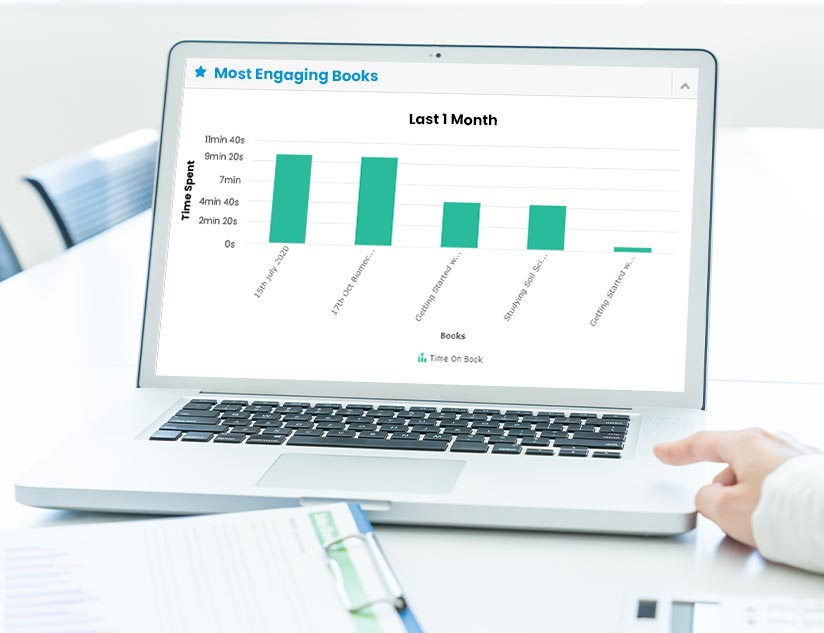Online learning plays a pivotal role in widening the access and participation in education for a diverse range of students. This has also created the need to stay intuitive to changing learning needs. With blended learning becoming the norm, Edtech products are creating an inclusive learning space for all users.
Predictive Learning Analytics (PLA) is a multidisciplinary approach that puts in practice predictive models that provide actionable information. This approach is based on data processing, and educational data mining. Predictive Learning Analytics aims to deliver educational content as per learner’s need and ability. This is done by implementing specific interventions, feedback, and by providing relevant instructional content based on the identified need.
4 ways predictive learning analytics decreases ineffective learning
Predictive Learning Analytics is useful in identifying and mitigating certain issues that hamper the effectiveness of learning programs. It also takes Learning Analytics to the next level i.e. rather than focusing on the past issues, it helps predict learners’ future success.
Dependent on different techniques used to ascertain and measure patterns in learning data and for inferring future behaviors, PLA is unlike other metrics. It is more effective as it focuses on the needs of individual learners. This makes it beneficial to track and tackle issues related to learning.
With PLA, it is possible to determine who followed the guidelines and learnt the material provided. It is also useful to record who is most, or even least, likely to apply the learning to their job.
Improving efficacy using Predictive Learning Analytics:
- It provides personalised learning experience.
- PLA holds the ability to predict learner performance and improves retention.
- It aids online training programs and contributes to a cost-effective training budget.
How to Use Predictive Learning Analytics
The efficacy of Predictive Learning Analytics depends on the involvement of stakeholders, learners, instructors, managers, and course administrators. Success of PLA in any company is dependent on thoughtful planning and preparation. It is also important to update policies and procedures in order to make space for changes related to PLA.
The different ways in which a company can apply the analytics to decrease ineffective learning include:
- Empowering Learners: An easy way to fill in the gap is to raise a warning for learners, especially when they are at risk.
- Keeping learners in the loop as they progress: By keeping the learners in loop, it becomes easier to allow them to make the corrections required for solidifying their learning. It also helps inculcate positive habits that will be eventually implemented by the into their daily work tasks.
- Early warning: Predictive Learning Analytics is used for early intervention. Using the trove of data from other learners who fit the profile, algorithms can easily predict the outcome of learner’s journey. It can be used to inform the instructor as well as the learner to take corrective actions.
- Developing Training Programs: When used properly, this is an excellent tool that can be used to drive organizational training programs. Learning data can be used for identifying gaps in learning modules and improving those for future.
While predictive learning analytics is advantageous for learners, a close review of the ethical and legal concerns throws light on the complexities and challenges involved. It is pivotal for Educators to be up to date with technology innovations that have the ability to improve learning outcomes. Not only does learning analytics allow institutions to understand trends for planning purposes, it also allows educators and learners to focus on skills for the 21st century. Nevertheless, it is necessary for educators to use and expand the boundaries of blended learning settings. However, since it is still in the nascent stage, it is essential for the analysts within the community to develop and improve the methods needed. In order to do so, requisite training in learning analytics is essential. This makes sure that the use of learning analytics is rightly serving the changing needs of educators, students, institutions, and researchers.
Learning Analytics helps build a data-driven culture as it supports faster reporting, analysis and optimization of existing channels, building on what is known. Thus, implementation of the same ensures a positive step forward and guarantees greater outcomes for all stakeholders. Also, it is equally important for the users to be aware of the legal & ethical aspects that comes with data usage., thus making sure that the use of learning analytics is rightly serving the changing needs of educators, students, institutions, and researchers.
MagicBoxTM offers analytics dashboard for publishers, teachers, students, and parents. A cloud-based mobile learning and distribution platform, it can be easily integrated into any LMS, and supports OneRoster, Clever, and Google classrooms specifications. For more details, feel free to drop in a message or call us!














